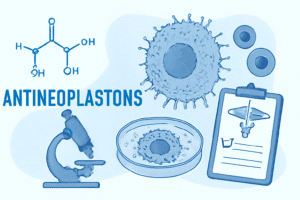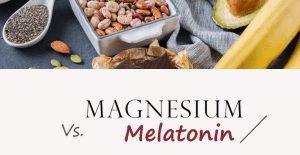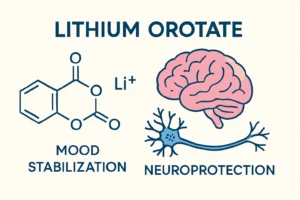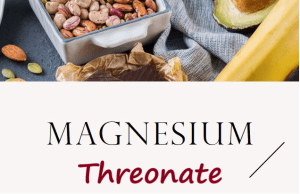Antineoplastons are a group of chemical compounds composed of amino acid derivatives, peptides, naturally found in human blood and urine. Chemically, they include mixtures such as antineoplaston A10, which has the molecular formula C13H14N2O3 and is known as 3-phenylacetylamino-2,6-piperidinedione. This compound is synthesized in laboratories and is characterized by a structure that includes a piperidinedione ring attached to a phenylacetamide group.
Antineoplastons are thought to interact with DNA, potentially inhibiting cancer cell growth and inducing apoptosis by affecting cell cycle progression and gene expression.
Antineoplastons: Exploring a Controversial Frontier in Cancer Research
Picture this: A Polish-born biochemist stands in his laboratory, examining vials of human urine under fluorescent lights. It’s 1967, and has just stumbled upon something that would spark five decades of scientific debate. He’s discovered unique peptide compounds that seem to behave differently in cancer patients versus healthy individuals. What began as an investigation into cybernetic systems would eventually challenge conventional cancer treatment paradigms—and ignite one of medicine’s most enduring controversies.
This is the story of antineoplastons. Neither wholly embraced nor entirely dismissed by the scientific community, these compounds occupy a peculiar space in cancer research where hope meets skepticism, where patient testimonials clash with regulatory caution, and where the promise of breakthrough treatments encounters the rigorous demands of evidence-based medicine.
The Genesis of a Theory: Dr. Burzynski’s Revolutionary Discovery
The theory of antineoplastons was conceived through the application of the cybernetic theory of autonomous systems to studies of peptides in human blood, with the original research beginning in 1967. But what exactly are antineoplastons? The name itself—derived from “anti” (against) and “neoplastic” (new abnormal growth)—hints at their proposed function.
Antineoplastons refer to mixtures of peptides, amino acids, and other organic substances that were first isolated from human urine and blood by Dr Stanislaw Burzynski. Think of them as molecular messengers, theoretically capable of instructing cancer cells to stop their chaotic multiplication or even to self-destruct through a process called apoptosis.
Burzynski’s eureka moment came from observing patterns. Cancer patients, he noticed, had significantly lower levels of certain peptides compared to healthy individuals. Could this deficiency be creating a vulnerability? His hypothesis suggested that these naturally occurring compounds served as the body’s built-in tumor suppression system—a biochemical defense network that cancer somehow managed to evade.
The implications were staggering. If true, replenishing these compounds might restore the body’s natural ability to fight cancer without the devastating side effects associated with conventional chemotherapy and radiation.
Decoding the Molecular Architecture
Understanding antineoplastons requires diving into their structural complexity. These aren’t simple molecules but rather intricate biological compounds with specific compositions and proposed mechanisms of action.

Chemical Composition and Structure
Amino acids are the building blocks of protein. Peptides are made up of two or more amino acids. Antineoplastons fall into this peptide category, though their exact molecular signatures vary depending on the specific compound. The most studied variants include Antineoplaston A10 and AS2-1, each with distinct molecular weights and amino acid sequences.
What makes these compounds particularly intriguing is their apparent stability in biological systems. Unlike many peptides that rapidly degrade when introduced into the human body, antineoplastons seem to maintain their structural integrity long enough to theoretically exert biological effects.
The Proposed Mechanism: How antineoplastons Work?
Dr. Stanislaw Burzynski first discovered and developed antineoplastons in the 1970s. He proposed that they work by targeting various biochemical pathways involved in cancer cell growth and survival. The mechanism isn’t singular but multifaceted.
The theory suggests antineoplastons can:
Trigger Cellular Reprogramming:
Cancer cells lose their normal growth regulation. Antineoplastons might restore these regulatory mechanisms, essentially “reminding” cancer cells how to behave normally.
Induce Apoptosis:
This is programmed cell death—nature’s way of eliminating damaged or dangerous cells. Cancer cells notoriously resist apoptosis, but antineoplastons may override this resistance.
Inhibit Angiogenesis:
Tumors need blood supply to grow. By potentially blocking the formation of new blood vessels feeding tumors, antineoplastons could starve cancer cells of essential nutrients.
Modulate Gene Expression:
Some research suggests these compounds might influence the expression of genes involved in tumor suppression, though this remains largely theoretical.
From Laboratory Bench to Clinical Practice: The Evolution
Antineoplaston therapy is an alternative and controversial cancer therapy available in America, developed by Dr S R Burzynski in the 1970s. The journey from laboratory discovery to clinical application wasn’t smooth—it was fraught with regulatory challenges, scientific scrutiny, and passionate advocacy.
Early Development and Manufacturing
In the initial stages, Burzynski extracted antineoplastons from blood and urine, however he is now able to make them in the laboratory. This evolution from biological extraction to synthetic production marked a crucial development. Working with human biological fluids posed obvious challenges—contamination risks, limited supply, and ethical considerations.
The transition to laboratory synthesis meant standardization became possible. Researchers could potentially create consistent batches with known concentrations and purities. Yet this advancement also meant moving further from the “natural” compounds Burzynski originally identified.
Clinical Implementation
In 1977 the Burzynski Clinic was established in Houston, TX. Since then, more than 10,000 patients have received treatment at the clinic, including more than 2,300 cancer patients who have been treated in FDA reviewed and Institutional Review Board (IRB) approved clinical trials.
The numbers are impressive, but they raise questions too. How do we interpret outcomes from a single clinic? To get the antineoplastons into the body they are taken in tablet form or injected, but the dosing protocols, treatment duration, and patient selection criteria have evolved over decades of clinical experience.
What’s particularly noteworthy is the patient population. Many who seek antineoplaston therapy have exhausted conventional options. They’re often dealing with advanced, aggressive cancers where standard treatments have failed. This creates both opportunity and complexity in evaluating outcomes.
The Evidence Landscape: Navigating Scientific Scrutiny of antineoplastons
Here’s where things get complicated. The scientific evidence surrounding antineoplastons exists in a peculiar gray zone that frustrates both advocates and critics.
The Challenge of Peer Review
No randomized controlled trials showing the effectiveness of antineoplastons have been published in the peer-reviewed scientific literature. This statement, repeated across multiple authoritative medical sources, represents perhaps the biggest hurdle in antineoplaston acceptance.
But why hasn’t peer-reviewed research emerged? Several factors contribute:
Resource Intensity: Conducting rigorous clinical trials requires enormous financial resources, often millions of dollars. For therapies developed outside pharmaceutical companies, securing this funding proves challenging.
Regulatory Complexities :The FDA’s relationship with antineoplastons has been complicated, involving multiple investigations, legal challenges, and shifting regulatory positions over decades.
Publication Barriers: Even well-conducted studies can face publication challenges if they investigate controversial treatments or produce inconclusive results.
Laboratory Evidence and Animal Studies
Some studies involving laboratory animals have shown promising results, such as tumor regression, inhibition of cancer cell growth, and improved survival rates. These preclinical findings shouldn’t be dismissed entirely, though they require careful interpretation.
Animal studies, while valuable, don’t always translate to human outcomes. Cancer biology differs significantly between species, and compounds that show promise in laboratory settings frequently fail in human trials. Still, positive laboratory results at least suggest the biological plausibility of antineoplaston effects.
Clinical Case Reports and Observational Data
While randomized controlled trials remain absent, case reports and observational studies from the Burzynski Clinic have documented some remarkable patient outcomes. Antineoplastons contributed to more than a 5-year survival in recurrent diffuse intrinsic glioblastomas and anaplastic astrocytomas of the brainstem in a small group of patients.
Brainstem gliomas represent some of the most challenging cancers to treat. Five-year survival in this population is extraordinarily rare with conventional treatments. If even a small percentage of patients achieve long-term survival with antineoplastons, that could be clinically significant.
However, case reports have limitations. Without control groups, it’s impossible to determine whether outcomes result from antineoplaston treatment, other concurrent therapies, or simply natural disease variation. Some patients might have survived just as long without any treatment.
The Regulatory Maze: FDA Relations and Legal Battles for antineoplastons
The relationship between antineoplastons and regulatory authorities reads like a medical thriller. Though Burzynski first injected patients with his peptides in 1977, antineoplastons have never been approved for general use.
This regulatory limbo has created unique circumstances. Patients can access antineoplaston therapy through clinical trials at the Burzynski Clinic, but the treatment remains investigational. Antineoplastons are not approved by the U.S. Food and Drug Administration for the prevention or treatment of any disease.
The FDA’s position reflects standard regulatory principles—treatments must demonstrate safety and efficacy through rigorous clinical trials before approval. Yet critics argue that this system, designed to protect patients, might also deny access to potentially life-saving therapies for those facing terminal diagnoses.
Legal battles have punctuated this relationship for decades. Grand jury investigations, license challenges, and congressional hearings have all played roles in this ongoing drama. Patients have traveled from around the world, spending substantial resources pursuing treatment that mainstream oncology doesn’t endorse.
Safety Profile: Understanding the Risks
No medical intervention is without risks, and antineoplastons are no exception. Although the therapy is promoted as natural and benign, it is in reality a form of chemotherapy with harmful side effects including severe neurotoxicity.
This characterization—antineoplastons as chemotherapy—surprises many who view them as “natural” alternatives. The compounds may derive from human biological sources, but their administration in therapeutic doses can produce significant physiological effects.
Documented Side Effects of antineoplastons
Reported adverse effects include:
Neurological Complications: Some patients experience confusion, seizures, or other neurological symptoms, particularly concerning given that brain tumors represent a significant portion of treated cases.
Electrolyte Imbalances: The high sodium content in some antineoplaston formulations can disrupt normal electrolyte balance, potentially affecting heart and kidney function.
Gastrointestinal Issues: Nausea, vomiting, and other digestive problems have been reported, though these may be less severe than with conventional chemotherapy.
Fatigue and Weakness: As with many cancer treatments, patients often experience significant fatigue during therapy.
The Unknown Factors
Many of the side effects are still unknown. This uncertainty reflects the limited systematic study of antineoplaston safety profiles. Long-term effects, interactions with other medications, and impacts on specific patient populations remain poorly characterized.
Current Research Status and Future Directions
Where does antineoplaston research stand today? The landscape is evolving, though slowly.
Ongoing Clinical Trials
Clinical trials are being done at the clinic where antineoplastons were first made to study the effect of antineoplastons on cancer. These studies continue to enroll patients, primarily those with brain tumors and other challenging malignancies.
The trial designs have become more sophisticated over time, incorporating better outcome measures and attempting to address some methodological concerns raised by critics. However, most research still originates from the Burzynski Clinic itself, raising questions about independent validation.
Several factors could influence future antineoplaston research:
Academic Interest: Some researchers outside the Burzynski organization have expressed interest in studying these compounds, though funding remains a challenge.
Technological Advances: Modern analytical techniques could provide better characterization of antineoplaston molecular structures and mechanisms of action.
Regulatory Evolution: Changes in FDA policies regarding compassionate use and accelerated approval pathways might create new opportunities for antineoplaston development.
Patient Advocacy: Continued patient and family advocacy could pressure regulatory agencies and research institutions to take antineoplastons more seriously.
The Broader Context: Alternative Cancer Treatments
Antineoplastons don’t exist in isolation—they’re part of a broader ecosystem of alternative and complementary cancer therapies. Understanding this context helps explain both the appeal and the controversy surrounding these treatments.
Why Patients Seek Alternatives
Cancer patients turn to alternative treatments for various reasons:
Limited Conventional Options : For cancers with poor prognoses, patients may feel they have nothing to lose by trying experimental treatments.
Fear of Side Effects : Conventional cancer treatments can be brutal. The promise of gentler alternatives appeals to many patients.
Desire for Control: Choosing alternative treatments can give patients a sense of agency in their medical journey.
Hope and Optimism: Alternative treatments often come with compelling testimonials and promises that conventional medicine can’t match.
The Challenge of Evaluation of Antineoplastons
Evaluating alternative cancer treatments presents unique challenges:
Placebo Effects: Cancer patients often experience psychological benefits from any treatment that offers hope, making it difficult to distinguish real therapeutic effects.
Selection Bias: Patients who choose alternative treatments often differ systematically from those who stick with conventional therapy, making comparisons difficult.
Outcome Measurement: What constitutes success in cancer treatment? Extended survival? Improved quality of life? Reduced symptoms? Different treatments may excel in different areas.
Scientific Consensus and Institutional Positions on Antineoplastons
Major cancer organizations have taken clear positions on antineoplastons. There is no conclusive evidence to support the antineoplaston theory, according to Memorial Sloan Kettering Cancer Center. No reputable scientific cancer organisations support any of these claims about antineoplaston efficacy.
These institutional positions carry significant weight. They reflect the consensus of thousands of oncologists, researchers, and public health experts who have evaluated available evidence. Yet they also frustrate patients and families who feel dismissed or abandoned by mainstream medicine.
The Role of Scientific Conservatism
Medical institutions tend toward conservatism, and for good reason. The history of medicine is littered with treatments that initially seemed promising but later proved harmful or ineffective. The thalidomide tragedy, where a medication caused severe birth defects, exemplifies why rigorous testing matters.
This conservatism serves important protective functions, but it can also slow the adoption of genuinely beneficial treatments. Finding the right balance between caution and innovation remains one of medicine’s ongoing challenges.
Patient Stories and Human Impact
Behind the scientific debates and regulatory battles are real people facing life-threatening diagnoses. Some have traveled thousands of miles and spent their life savings pursuing antineoplaston treatment. Their stories—both positive and negative outcomes—deserve consideration.
Testimonials of Hope
The Burzynski Clinic’s website features numerous patient testimonials describing remarkable recoveries from terminal cancers. These stories are powerful and moving, describing individuals who defied medical predictions and returned to normal lives.
However, testimonials have limitations. They represent selected cases rather than systematic outcomes. We don’t hear from patients whose treatments failed or who experienced severe side effects. This selection bias can create misleading impressions about treatment effectiveness.
The Cost of Hope
Antineoplaston therapy is expensive, often costing hundreds of thousands of dollars. Most insurance companies don’t cover experimental treatments, forcing families to deplete savings, mortgage homes, or launch fundraising campaigns.
The financial burden adds another layer of complexity to treatment decisions. Families face impossible choices—risk financial ruin for uncertain benefits, or accept conventional medical predictions about limited survival time.
Implications for Cancer Research and Treatment
The antineoplaston story raises important questions about how we develop and evaluate cancer treatments. Should promising therapies undergo decades of rigorous testing while patients die waiting? Or should we lower evidentiary standards for treatments aimed at terminal illnesses?
Compassionate Use and Right to Try
Recent legislative changes, including “Right to Try” laws, reflect growing recognition that terminally ill patients should have broader access to experimental treatments. These policies acknowledge that the traditional risk-benefit calculation changes when conventional treatments offer little hope.
Antineoplastons exist in this gray area between proven treatments and pure speculation. They have biological plausibility, some supportive laboratory evidence, and decades of clinical experience—but lack the randomized controlled trials that typically guide medical practice.
The Innovation Dilemma
How do we balance innovation with patient safety? How do we encourage research into promising treatments while preventing exploitation of vulnerable patients? The antineoplaston controversy illuminates these tensions without resolving them.
One potential solution involves adaptive trial designs that can provide faster answers about treatment effectiveness while maintaining scientific rigor. Another involves better integration of observational data from clinical practice into regulatory decision-making.
Looking Forward: The Future of Antineoplaston Research
What does the future hold for antineoplastons? Several scenarios seem possible:
Scenario 1: Gradual Mainstream Acceptance
If independent researchers replicate positive findings from animal studies and develop more rigorous clinical trials, antineoplastons could gradually gain mainstream acceptance. This would require significant investment in research infrastructure and probably collaboration between the Burzynski Clinic and academic medical centers.
Scenario 2: Continued Marginalization
Alternatively, antineoplastons might remain on the margins of cancer treatment, available to patients willing to travel to Houston but never achieving broader acceptance. This scenario seems likely unless dramatic new evidence.
Reference
[1] Antineoplaston A10 | C13H14N2O3 | CID 56260 https://pubchem.ncbi.nlm.nih.gov/compound/Atengenal
[2] Antineoplastons (PDQ®) https://www.cancer.gov/about-cancer/treatment/cam/hp/antineoplastons-pdq
[3] Definition of antineoplaston AS2-1 – NCI Drug Dictionary https://www.cancer.gov/publications/dictionaries/cancer-drug/def/antineoplaston-as2-1
[4] Antineoplastons: Health Benefits, Side Effects, Uses, Dose … https://www.rxlist.com/supplements/antineoplastons.htm
[5] PHENYLACETYLGLUTAMINE – Inxight Drugs https://drugs.ncats.io/drug/92358I79RG
[6] Immune modulatory potentials of antineoplaston A-10 in … https://www.sciencedirect.com/science/article/abs/pii/S0304383500004729
[7] Antineoplaston Therapy and Sodium Phenylbutyrate https://member.myhealthtoolkitks.com/web/public/brands/medicalpolicy/external-policies/antineoplaston-therapy-and-sodium-phenylbutyrate/
[8] Antineoplaston Therapy – Medical Clinical Policy Bulletins https://www.aetna.com/cpb/medical/data/200_299/0240.html
[9] Antineoplaston A10 | 99.46%(HPLC) | In Stock | Ras inhibitor https://www.selleckchem.com/products/antineoplaston-a10.html
[10] Antineoplaston A10 | Endogenous Metabolite https://www.medchemexpress.com/antineoplaston-a10.html





